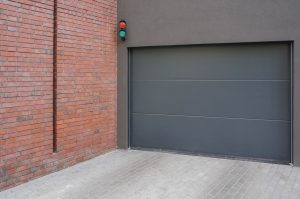Is your garage feeling too hot in the summer or freezing cold in the winter? Insulating your garage door can make a huge difference in comfort and energy savings.
You don’t need to hire a pro or spend a fortune to get it done. With a few simple steps, you can boost your garage’s insulation yourself. Keep reading to discover easy, effective ways to make your garage more comfortable and save money on energy bills all year round.
Your garage—and your wallet—will thank you!
Benefits Of Insulating Your Garage Door
Insulating your garage door can make a noticeable difference in your home’s energy efficiency and overall comfort. It’s a simple upgrade that offers multiple practical benefits. Here’s how adding insulation to your garage door can improve your daily life and save you money.
Reduced Energy Bills
Insulation helps block heat transfer through your garage door. This means less cold air seeps in during winter, and less warm air sneaks inside during summer.
Over time, this reduces the workload on your heating and cooling systems. You’ll likely see a drop in your energy bills without doing much else.
Have you noticed your garage feels like a freezer in winter? Insulating can stop that, saving you money on heating costs.
Improved Temperature Control
Keeping your garage at a more stable temperature is easier with insulation. It helps maintain a consistent climate inside, which is especially helpful if you use the garage for projects or as a workspace.
Insulated doors prevent extreme temperature swings that can damage tools, paint, or even your car. It’s a practical way to protect your belongings without extra effort.
Would you like your garage to feel more like an extension of your home? Temperature control through insulation makes that possible.
Enhanced Comfort
Insulated garage doors reduce drafts and noise, making the space quieter and more comfortable. This is a big plus if your garage is attached to your house.
You won’t have to deal with cold floors or noisy street sounds leaking through the door. It creates a more pleasant environment, whether you’re working, relaxing, or storing items.
Imagine spending less time shivering or shielding your ears from traffic noise. Insulation helps make your garage a place you want to spend time in.
Choosing The Right Insulation Material
Choosing the right insulation material for your garage door matters a lot. The material affects how well your garage stays warm or cool. It also impacts energy savings and comfort. Some materials work better in cold places, others in hot areas. Think about your climate, budget, and how easy the material is to install. Below are common insulation types to help you decide.
Foam Board Panels
Foam board panels are rigid and strong. They offer excellent thermal resistance. These panels are lightweight and easy to cut. You can fit them between garage door panels for a tight seal. Foam boards resist moisture, which helps prevent mold. They also reduce noise from outside. This type works well in both hot and cold climates.
Reflective Insulation
Reflective insulation reflects heat away from the garage. It consists of a shiny foil layer. This layer faces outwards to block radiant heat. Reflective insulation is thin and easy to install. It works best in hot climates to keep the garage cooler. This material also helps reduce energy bills. It pairs well with other insulation types for extra protection.
Fiberglass Batting
Fiberglass batting is soft and flexible. It fits easily into garage door cavities. This material traps air, which slows heat transfer. Fiberglass is affordable and widely available. It can irritate skin, so wear gloves during installation. It works well for cold climates by keeping warmth inside. Proper sealing is important to avoid moisture damage with fiberglass.
Tools And Materials You’ll Need
Preparing to insulate your garage door requires specific tools and materials. Having everything ready saves time and effort. This section outlines the items needed to complete the project efficiently and safely.
Essential Tools
- Measuring tape – for accurate panel dimensions
- Utility knife – to cut insulation material cleanly
- Straightedge or ruler – ensures straight cuts
- Staple gun with staples – to attach insulation securely
- Gloves – protect hands from sharp edges and insulation fibers
- Safety glasses – prevent debris from entering eyes
- Marker or pencil – mark measurements and cutting lines
- Putty knife – remove old insulation or debris
Recommended Supplies
- Insulation panels or rolls – foam board, fiberglass, or reflective foil
- Weatherstripping tape – seal gaps around the door edges
- Adhesive spray – helps attach insulation to metal surfaces
- Duct tape – secure edges and seams
- Plastic sheeting – optional, for added moisture barrier
- Cleaning cloth – wipe down surfaces before installing insulation
Step-by-step Installation Process
Insulating your garage door improves energy efficiency and comfort. Follow these clear steps to install insulation yourself. Each part is simple and requires basic tools. This guide helps you do it right the first time.
Preparing The Garage Door
Start by cleaning the garage door surface. Remove dirt, dust, and grease with a mild cleaner. Let it dry completely. Check the door for damages or rust spots. Repair or sand those areas to ensure smooth insulation application. Gather all tools and insulation materials before you begin.
Cutting Insulation To Size
Measure each garage door panel carefully. Use a tape measure for accuracy. Mark the insulation panels with a pencil or marker. Cut the panels using a utility knife or scissors. Cut slowly to keep edges straight and clean. Make sure each panel fits snugly inside the door frame.
Securing Insulation Panels
Attach the insulation panels using adhesive or double-sided tape. Apply tape evenly to the back of each panel. Press the panel firmly against the door surface. For extra hold, use insulation fasteners or small nails. Check that all edges are sealed to block drafts. Repeat for each panel until the door is fully insulated.
Tips For Maximizing Insulation Efficiency
Maximizing the efficiency of your garage door insulation saves energy and keeps your space comfortable. Simple steps help reduce heat loss and prevent drafts. Focus on tight sealing and regular care for best results.
Sealing Gaps And Cracks
Check all edges of the garage door for gaps or cracks. Use weatherstripping or caulk to seal these spaces. This blocks cold air from entering and warm air from escaping.
- Inspect around the door frame and bottom seal.
- Fill small holes with foam sealant or caulk.
- Replace worn or damaged weatherstripping.
- Ensure the door fits tightly when closed.
Proper sealing improves insulation and lowers energy bills.
Maintaining Insulated Doors
Regular maintenance keeps insulation effective over time. Clean the door surface to remove dirt and debris. Check insulation panels for damage or wear. Replace any broken or missing parts quickly.
- Lubricate moving parts to prevent gaps from forming.
- Inspect insulation for moisture or mold.
- Tighten loose screws and bolts.
- Check door alignment to ensure a snug fit.
Routine care extends insulation life and improves performance.
Common Mistakes To Avoid
Insulating your garage door can save energy and keep the space comfortable. Avoiding common mistakes ensures your work lasts longer and works better. Many errors happen due to wrong materials or poor preparation. These can cause gaps, moisture problems, or weak insulation. Focus on using the right supplies and preparing surfaces properly for the best results.
Using Incorrect Materials
Choosing the wrong insulation material can reduce effectiveness. Some materials do not handle moisture well and may rot or mold. Avoid materials that are too thick or heavy for your door. Use insulation designed for garage doors or similar applications. Look for materials with good R-value to keep heat out or in. Avoid cheap foam or fabric that degrades quickly.
Skipping Surface Preparation
Not cleaning or drying the door before installation causes problems. Dirt and dust prevent insulation from sticking properly. Moisture trapped under insulation leads to rust and mold. Check for rust spots or damage and fix before adding insulation. Wipe the surface clean and let it dry fully. Proper preparation helps insulation stay secure and last longer.
Long-term Benefits Of Insulated Garage Doors
Insulating your garage door offers benefits that last for years. It protects your garage from extreme temperatures. This makes your home more comfortable and energy-efficient. The investment pays off over time by saving money and adding value.
Energy Savings Over Time
Insulated garage doors reduce heat loss in winter. They block heat from entering during summer. This lowers heating and cooling costs. Your HVAC system works less hard. This saves energy and reduces utility bills every month. Over time, these savings add up significantly.
Increased Home Value
An insulated garage door boosts your home’s market appeal. Buyers appreciate energy-efficient features. It signals that the home is well-maintained. This can increase the resale value. It also helps your property stand out in listings. A smart upgrade that pays back at sale time.
Frequently Asked Questions
What Materials Are Best For Diy Garage Door Insulation?
The best materials include foam board, reflective foil, and fiberglass. They offer good thermal resistance and are easy to install. Choose based on your budget, climate, and garage use. Proper materials improve energy efficiency and comfort.
How Do I Measure My Garage Door For Insulation?
Measure the width and height of each door panel accurately. Calculate total surface area to buy enough insulation material. Precise measurements prevent waste and ensure complete coverage for effective insulation.
Can I Insulate A Garage Door Without Professional Help?
Yes, DIY insulation is possible with basic tools and materials. Follow step-by-step guides and safety instructions. It saves money and improves garage comfort. However, complex doors may require expert help.
How Much Can Garage Door Insulation Save On Energy Bills?
Insulating your garage door can reduce energy costs by 10-20%. It minimizes heat loss in winter and heat gain in summer. Savings depend on climate, insulation quality, and garage usage.
Conclusion
DIY garage door insulation helps keep your space warm or cool. It saves energy and lowers your bills. You only need simple tools and materials to start. The process is quick and does not require much skill. A well-insulated garage feels more comfortable year-round.
Small efforts bring big benefits. Try it yourself and see the difference. Your garage will thank you.








